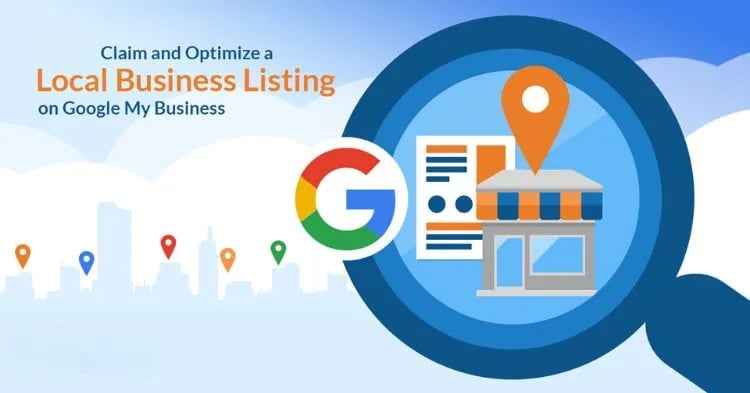
There’s a powerful strategy waiting to transform your website and boost your business: Conversion Rate Optimization (CRO). By effectively applying CRO techniques, you can enhance the customer experience, turning more visitors into valuable leads. In this blog post, you will discover eight actionable ways to implement CRO on your site, seamlessly integrating advice from experts at Mister Nguyen Agency with insights on leveraging social media and design brand principles. Get ready to elevate your online presence and engage your audience like never before!
Understanding Conversion Rate Optimization

Before stepping into strategies, it’s necessary to grasp the concept of Conversion Rate Optimization (CRO). This practice focuses on enhancing your website’s efficiency to turn visitors into customers or leads, ultimately boosting your business’s profitability. By analyzing user behavior and optimizing key elements, you can create a seamless experience that encourages conversions.
What is Conversion Rate Optimization?
Across various digital platforms, Conversion Rate Optimization refers to the systematic process of increasing the percentage of visitors who take desired actions on your website. This could involve signing up for a newsletter, filling out a contact form, or making a purchase. Effective CRO targets the user journey, ensuring that every step leads your customers closer to conversion.
Importance of CRO in Digital Marketing
Optimization of your conversion rates can have a significant impact on your digital marketing efforts. By improving the effectiveness of your website, you can attract and retain more customers while maximizing the return on your marketing investments. With CRO, you can leverage insights from social media, analytics, and design brand strategies to create an engaging user experience that drives business growth.
To truly appreciate the importance of CRO in digital marketing, consider how every visitor to your website represents a potential lead for your business. Enhancing your conversion rates means you’re not just attracting traffic, but also successfully turning that traffic into loyal customers. By applying CRO principles, you can make informed design choices, optimize your marketing campaigns, and ensure your website is meeting the needs of your audience effectively. Partnering with experts like Mister Nguyen Agency might also provide additional insights and strategies tailored for your brand’s success.
Analyzing Current Performance

One of the first steps in Conversion Rate Optimization (CRO) is analyzing your current performance. This involves evaluating data from your website to understand how visitors are interacting with your content, what actions they are taking, and where they may be dropping off. By digging into your analytics, you can gather insights to tailor your strategies effectively for your business and maximize leads from potential customers.
Tools for Measuring Conversion Rates
On your journey to optimize conversions, utilizing the right tools can significantly enhance your insights. Platforms like Google Analytics, Hotjar, and Crazy Egg provide invaluable data about user behavior, helping you track conversion rates effectively. These tools allow you to measure and analyze metrics such as traffic, bounce rates, and user engagement, giving you a robust foundation to inform your CRO strategy.
Identifying Areas for Improvement
Current performance analysis is important for identifying areas for improvement in your website’s conversion process. By examining where your visitors exit or the points at which they disengage, you can pinpoint specific weaknesses in your sales funnel that may be hindering leads and sales.
Areas you should focus on include page load times, clarity of calls-to-action, and the overall user experience. Analyzing the path customers take on your site can reveal friction points where they may lose interest or fail to convert. By improving these aspects of your website, you can create a more streamlined and effective journey that encourages customers to engage with your brand and ultimately drive conversions for your business.
Creating Targeted Landing Pages

Despite the noise of the digital marketplace, creating targeted landing pages can significantly improve your conversion rates. By aligning your landing pages with the specific needs and interests of your audience, you can effectively capture the attention of your customers and guide them through the sales funnel. Tailor your messaging, visuals, and offers to resonate with your target audience, ensuring that every element of your landing page works together to convert leads into loyal customers for your business.
Elements of High-Converting Landing Pages
High-converting landing pages are specifically designed to make an impact by including compelling copy, persuasive calls-to-action, and eye-catching visuals. Key elements like testimonials, social proof, and clear value propositions help establish trust with your visitors, making it more likely that they will take the desired action. Keeping the layout clean and user-friendly enhances the overall experience, allowing your customers to feel confident in their decision to engage with your business.
A/B Testing for Optimal Results
The value of A/B testing cannot be overstated when it comes to optimizing your landing pages. By testing different versions of your website elements such as headlines, images, and call-to-action buttons, you can identify what truly resonates with your audience and encourages conversions. This data-driven approach lets you refine and improve your pages over time.
Plus, A/B testing empowers you to make informed decisions based on actual customer behavior rather than assumptions. Regularly conducting these tests enables you to enhance user experience and boost your conversion rates continuously. By leveraging tools and conducting systematic tests on various aspects of your landing pages, you’ll gain valuable insights into what effectively engages your customers and drives leads for your business through Mister Nguyen Agency’s expertise in social media and design brand.
Enhancing User Experience

Once again, a focus on enhancing user experience (UX) is vital for successful Conversion Rate Optimization (CRO). When you prioritize the needs and preferences of your customers, you naturally foster a more engaging website that can turn visitors into leads. A streamlined user experience helps retain your audience’s attention, ultimately boosting your business’s bottom line. In today’s competitive market, leveraging UX design is one of the best investments you can make to improve your website’s performance.
Importance of UX Design
Importance of UX design lies in its ability to create a seamless, enjoyable experience for your customers. Well-designed UX reduces friction points and encourages user interaction, making it easier for visitors to navigate your website and find what they need. By investing in UX, you’re not just enhancing aesthetics; you’re also increasing user satisfaction, fostering trust, and boosting conversion rates—all important for growing your business in the digital landscape.
Strategies for Improving UX
One effective way to improve your website’s UX is by implementing strategies that prioritize user feedback, accessibility, and responsiveness. Engaging with your customers through surveys can offer valuable insights into their preferences, allowing you to make data-driven adjustments. Additionally, ensure your website is mobile-friendly and compatible with various devices, as a significant portion of users access online content through social media and smartphones. A user-centric approach will ultimately enhance both customer satisfaction and conversion rates.
Due to the diverse needs of your audience, it’s important to utilize various strategies for improving UX. Start by optimizing your website’s loading speed, as lengthy load times can lead to high bounce rates. Incorporate a clear call-to-action (CTA) that guides customers through their journey effortlessly. Also, consider using consistent design elements to create a cohesive brand experience across your site. By continually analyzing user behavior through analytics tools, you can make informed decisions about UX improvements. A commitment to excellent UX will not only serve your customers better but will also generate more leads for your business.
Implementing Effective Calls-to-Action

Your calls-to-action (CTAs) are important elements on your website that guide customers toward the next step, whether it’s signing up for a newsletter, making a purchase, or downloading a resource. By implementing effective CTAs, you can significantly increase your conversion rates and drive more leads for your business. This process involves a thoughtful approach to crafting compelling messages and ensuring their strategic placement on your website.
Crafting Compelling CTAs
One of the keys to crafting compelling CTAs is to use action-oriented language that clearly communicates the benefits your customers will receive. Instead of generic phrases like “click here,” try more specific verb-based calls like “Get Your Free Sample” or “Join Our Community Today.” Tailoring your CTAs to resonate with your audience can significantly enhance engagement and motivate them to take action.
Placement and Visibility Strategies
For your CTAs to be effective, their placement on your website is just as important as their wording. You should strategically position them where your customers are most likely to see and engage with them—such as at the top of the page, within the content, or at the end of a blog post. By optimizing visibility, you guide your customers seamlessly through their journey, transforming potential interest into concrete leads for your business.
Another effective strategy is to use contrasting colors and larger fonts for your CTAs, ensuring they stand out on your website. Consider incorporating them into various sections, like landing pages or social media posts, to maximize reach. Continuously testing different placements will provide insights into what resonates best with your audience, helping you refine your approach to convert more visitors into leads. Working with experts like Mister Nguyen Agency can also provide you with valuable advice on design brand elements that can further elevate the impact of your CTAs.
Leveraging Social Proof
After implementing various optimization strategies, it’s important to leverage social proof to enhance your website’s credibility. By showcasing positive experiences from customers, you can effectively influence potential leads and persuade them to choose your business. This trust factor can significantly enhance your conversion rate, ultimately driving more sales for your brand.
Types of Social Proof
Before choosing the right type of social proof, you should consider which resonates most with your target audience. Here are a few effective options:
| Customer Testimonials | Feedback and reviews from satisfied customers. |
| Case Studies | In-depth stories highlighting successful projects. |
| User-Generated Content | Content created by your customers showcasing your product. |
| Social Media Mentions | Posts and shares about your business on social platforms. |
| Expert Endorsements | Recommendations from industry leaders or influencers. |
The effective use of these social proof types can significantly enhance your website’s appeal to your customers.
How to Effectively Use Testimonials
Social proof is most potent when you leverage testimonials in a way that resonates with your potential customers. Display them prominently on your website, ideally on your homepage or landing page, where they can capture attention immediately. Use authentic quotes and attributes to real customers, including names and photos, to enhance credibility and create a personal connection.
Plus, consider showcasing a variety of testimonials that highlight different aspects of your business, such as customer service, product effectiveness, or overall satisfaction. By presenting diverse experiences, you appeal to a broader audience and illustrate the value of your offerings. Implementing testimonials effectively can turn your visitors into loyal customers, significantly boosting your business’ conversion rate.
Conclusion
Now that you have explored the imperative steps for How to Get Started With Conversion Rate Optimization: 8 Key Strategies, it’s time to apply these strategies to your website. By enhancing your business’s ability to convert visitors into leads and customers, you’ll effectively boost your social media presence and strengthen your brand design strategy. Engage with your audience and continually refine your approach to ensure that you meet their needs.










